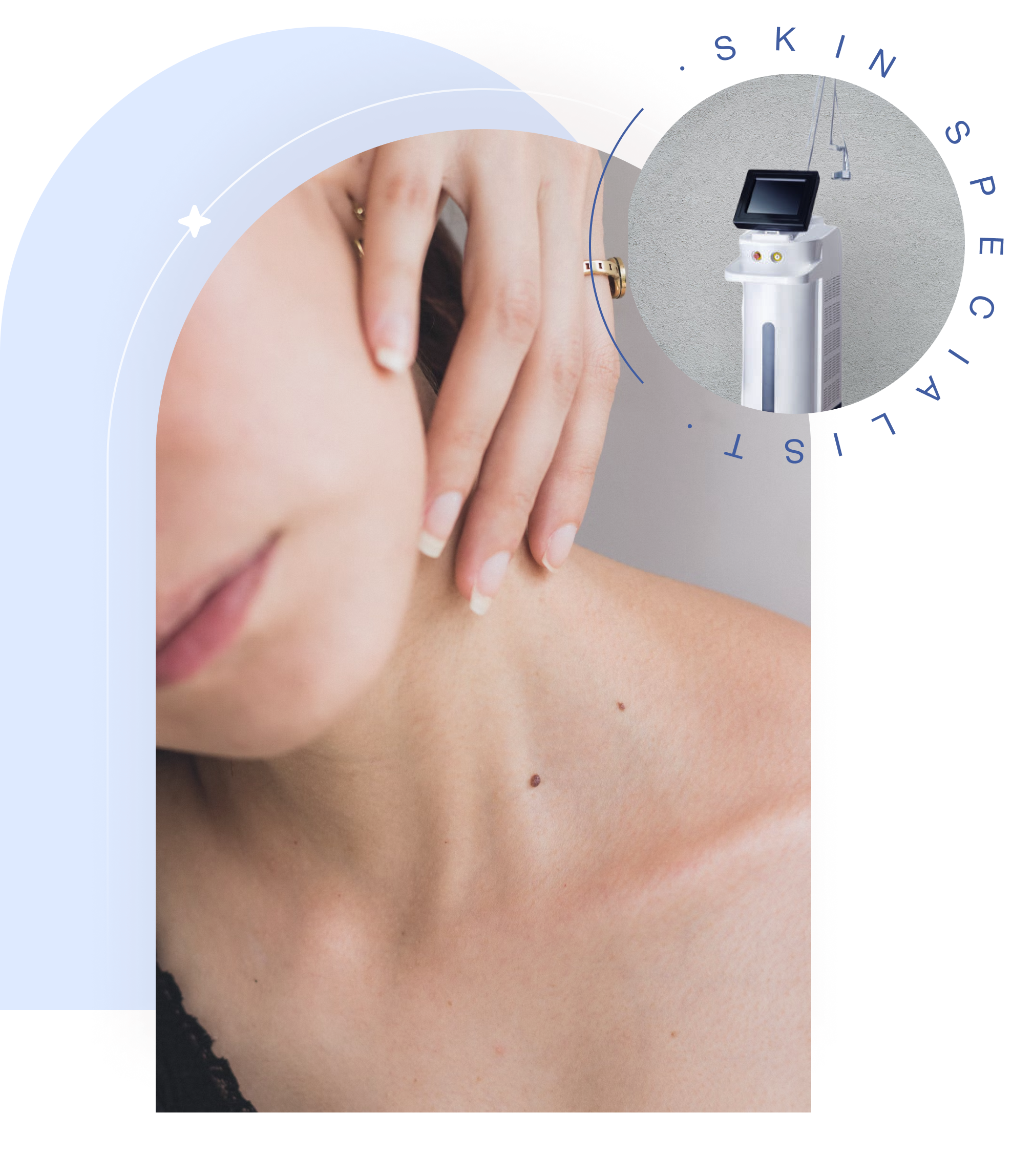Squamous cell carcinoma (SCC) is the second most common form of skin cancer after basal cell carcinoma (BCC). It develops from squamous cells, which make up the surface layer of the skin (the epidermis).
Squamous Cell Carcinoma is the second most common form of skin cancer after Basal Cell Carcinoma. It develops from squamous cells, which make up the outer layer of the skin (epidermis). SCC typically arises in areas that have experienced long-term sun exposure, but it can also occur on parts of the body not typically exposed to sunlight.

(Available on Excel V and Excel V Plus)
Best for
Mild cases or isolated vessels.
How It Works
The long-pulse Nd:YAG laser emits energy at a wavelength absorbed by haemoglobin in blood vessels. This heat causes the targeted vessels to collapse, effectively treating both surface red veins and deeper blue veins.
Results
Treated vessels may disappear immediately or gradually fade over several weeks.
(Candela VBeam Perfecta, Excel V, Excel V Plus, Sciton BBL)
Best for
More severe cases or large areas of visible facial veins and redness, particularly in rosacea.
How It Works
This approach layers multiple vascular-targeting technologies in one session, including:
Results
Effectively reduces visible veins, diffuse redness, and facial flushing commonly seen in rosacea.
(Candela VBeam Perfecta, Excel V, Excel V Plus, Sciton BBL)
Best for
Stimulating collagen and vascular remodelling to reduce persistent skin redness.
How It Works
Often recommended in combination with vascular laser or BBL treatments to enhance skin healing, texture, and redness reduction.

Yes, SCC can be serious if left untreated. While most cases are treatable when caught early, SCC can grow deep into surrounding tissue and has the potential to spread (metastasise) to lymph nodes or other organs.

SCC may appear as a scaly red patch, a non-healing sore, a raised growth with a central dip, or a wart-like lesion. It often crusts or bleeds and may feel tender to the touch.

Treatment duration varies by method. Minor surgical procedures like excision or ED&C may be done in one visit, while topical therapies or photodynamic treatment may take several weeks. Mohs surgery can take several hours due to the layer-by-layer process.

Yes. Although treatment is often successful, SCC can recur in the same location or elsewhere on the skin, especially in individuals with high sun exposure or weakened immune systems.

Protect your skin from UV exposure by using sunscreen, wearing protective clothing, avoiding tanning beds, and checking your skin regularly for changes. Early detection is key.